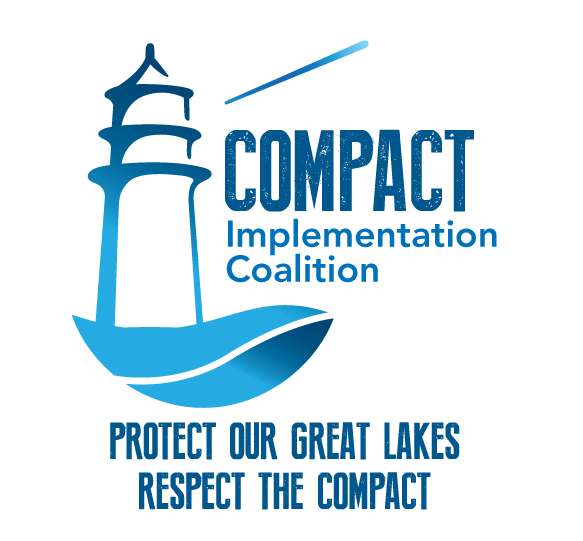Frequently asked questions
Why did it take so long for the Wisconsin Department of Natural Resources (DNR) to complete its environmental impact statement (EIS) and technical review of City of Waukesha's diversion application?
The City of Waukesha first sent in a diversion request in 2010, which the Wisconsin DNR determined incomplete and could not be reviewed.
A second application was submitted a year later in 2011, on Waukesha’s timetable. This version, too, lacked adequate “proof” of its case. The Department and Waukesha spent the next two years going back and forth over information requested by DNR, and Waukesha’s attempts to avoid full compliance.
A third version of the application was publicly rolled out in October 2013. This latest iteration is the one on which DNR will issue its EIS and Technical Review.
Why isn't Waukesha allowed to take water out of the Great Lakes basin?
The Great Lakes Basin is defined as the area of land surrounding all 5 Great Lakes where all of the water that falls in that area drains to the Great Lakes. Water basin boundaries do not follow political boundaries, such as city and county lines. This means that some cities, counties and states may cover or “straddle” more than one basin. Waukesha County is one of those straddling counties. The Compact allows for an exception to its ban on out-of-basin diversions for these “straddling county communities”. However, to qualify for what is supposed to be a rare exception to the rule, the community in the straddling county must meet a set of very strict requirements that protect the waters of the Great Lakes. Water has value in its place.
What about the need to ensure Waukesha’s residents have a safe drinking water supply?
That Waukesha’s residents have safe drinking water is of the utmost importance to the Coalition. While it is true that the deep aquifer, from which Waukesha currently gets some of its water, has naturally occurring radium in it, many communities in Southeastern Wisconsin and around the nation treat their drinking water supplies to remove radium to safe levels. Waukesha tends to downplay this option, but treatment of deep aquifer water to safe, healthy levels is part of the common sense plan for Waukesha’s future that the coalition argues makes the most sense going forward on environmental, public health, and economic grounds.
How will the DNR decision about Waukesha's diversion application set a precedent for future diversion applications?
There are other straddling communities that could potentially apply for a Great Lakes water diversion. Waukesha’s application will significantly impact the process and the outcome of future diversion demands.
If Waukesha is allowed to divert Great Lakes water with a “close enough” passing grade, we can be sure to expect other municipalities to follow suit. It is unlikely that these communities will ever exceed the low standards set by Waukesha in this first application.
A poor precedent in the City of Waukesha will weaken the protections of the Great Lakes Compact to the extent that the legal borders of a “straddling community” may not protect the Great Lakes from lawsuits by truly needy communities in the western part of Wisconsin, or the drought-stricken areas in the south and southwest United States.
Isn't returning 100% of Great Lakes water a good thing for the Great Lakes?
Because the Root River has already been designated as impaired according to the DNR, Waukesha has the responsibility to demonstrate that its discharge will not result in new or increased pollution (phosphorus) being added to the Root River.
Waukesha says its return flow will be of a higher quality than the current water quality in the Root River, and that Root River water quality will be improved due to dilution from their discharge. However, adding diluted pollution still adds pollution loading to the waterway, and will still contribute to the overall impairment of the Root River. This violates the standards of the Compact and the federal Clean Water Act.
Will Waukesha's return flow impact water quality and wildlife habitat in the Root River?
Changing the amount (and timing) of water returned to the Root River has the potential to change the physical, chemical, and biological properties of the waterway. The Compact requires that if water will be returned to the source watershed through a stream tributary to one of the Great Lakes, the physical, chemical, and biological integrity of the receiving water must be protected and sustained (Wis. Stats. §§ 30.12, 281.15 and 283.31).
Waukesha currently uses shallow and deep groundwater from the Mississippi River Basin, and discharges treated wastewater to the Fox River, the waterway that flows through the city. Under Waukesha’s new proposed return flow plan it would co-mingle or mix Lake Michigan Basin water (taken from the City of Oak Creek) and Mississippi River Basin water (from local wells and groundwater infiltration into pipes), discharging 100% of their diversion amount to the Root River with the excess from the co-mingling being discharged to the Fox River. The Great Lakes Compact requires that co-mingling of Great Lakes waters with other waters be minimized to protect waterways on both sides of the Great Lakes divide.
In addition to Compact-related concerns, we feel that returning Mississippi River waters to the Root River on a continual basis has the potential to negatively impact vital habitat and aquatic life in the Fox River, especially during periods of low stream flow (e.g. likely impacts on mussels and several sensitive fish species).
